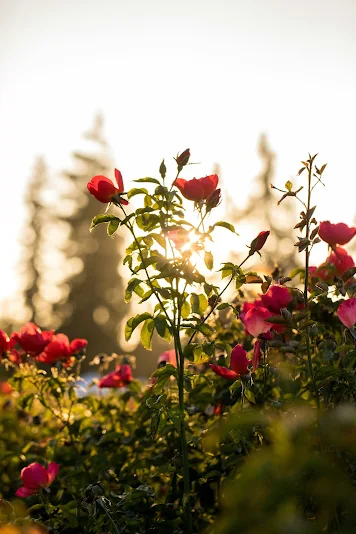Flower Gardening Tips
Discover the secrets to cultivating a vibrant and thriving flower garden with our essential tips. Transform your outdoor space into a colorful oasis by learning the art of proper soil preparation, strategic plant placement, and effective watering techniques. Explore the fascinating world of flower varieties, from resilient perennials to delicate annuals, and elevate your gardening expertise. Uncover the significance of sunlight and shade for different blooms, and gain insights into pest control
Saturday, May 31, 2025
Tuesday, May 13, 2025
How to Prune Old or Neglected Roses (Without the Stress!)
Sunday, April 13, 2025
Thursday, April 10, 2025
How to grow rose from cuttings at home easy method
How to grow rose from cuttings at home easy method
Growing Roses: From Reluctant Gardener to Rose Enthusiast
Tuesday, April 1, 2025
Friday, March 14, 2025
Saturday, February 22, 2025
What is the easiest way to grow roses from seed?
What is the easiest way to grow roses from seed?
Growing roses from seed can be a rewarding experience, but it requires patience and the right approach. Unlike propagating roses from cuttings, growing them from seed allows you to develop unique varieties with different colors and characteristics. If you are up for the challenge, here is the easiest way to grow roses from seed.
Step 1: Collect or buy quality seeds.
You can either collect seeds from rose hips on existing plants or buy them from a reputable supplier. If you are collecting from your garden, wait until the rose hips (the fruit of the rose) turn orange or red, then harvest them.
Tuesday, January 21, 2025
Tuesday, January 14, 2025
5 Genius Ways to Water Your Plants While on Vacation - Automatic Indoor Plant Care
Introduction:
Heading off for a well-deserved vacation but worried about your beloved indoor plants? Don’t worry! With these genius automatic watering solutions, your plants will stay hydrated and healthy while you’re away.
1. DIY Water Wick System
Saturday, January 4, 2025
Subscribe to:
Comments (Atom)
How to Help Your Roses Survive the Summer Heat: 9 Essential Tips.
How to Help Your Roses Survive the Summer Heat: 9 Essential Tips.

-
How to Cultivate Your Garden in the Spring Season: A Complete Guide R enewal, growth, and fresh beginnings. For gardeners, it’s a magi...
-
How to Prune Old or Neglected Roses (Without the Stress!) Hello garden lovers
-
Introduction: Thriving Through the Heat
-
Gardeners often select plants for their stunning foliage, appreciating the texture, structure, and vibrant hues they bring to the landscap...
-
How to Plant Flower Bulbs in Winter — Including How to Grow Them Indoors
-
Introduction: Leave on an excursion to make a sprouting heaven with fundamental hydrangea care tips. Find the key to supporting these charm...
-
Introduction : In the domain of planting development, keyhole development stands out as a reference point of proficiency and maintainabilit...
-
Introduction: Heading off for a well-deserved vacation but worried about your beloved indoor plants? Don’t worry! With these genius automati...



















